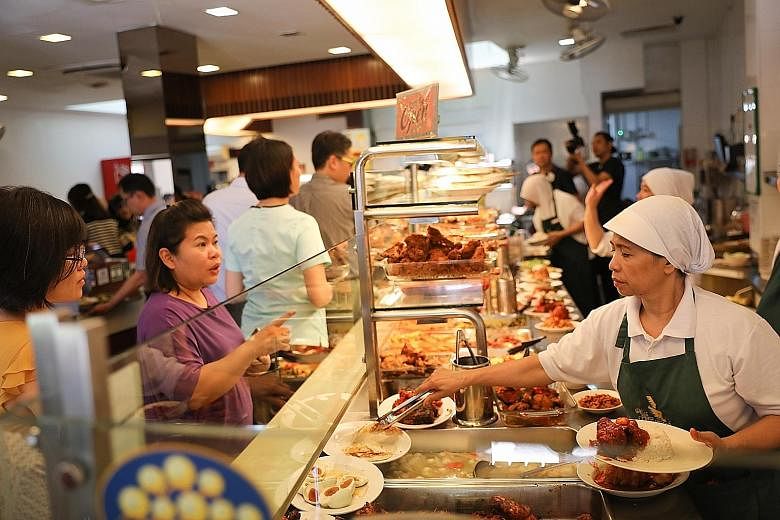Four more nasi padang eateries here are now offering dishes which use healthier oil and wholegrain rice, as part of the Health Promotion Board (HPB)'s Healthier Dining Programme.
Restaurants Hjh Maimunah, Mamanda and Pu3, along with hawker stall Dapur Bonda Khadijah at Berseh Food Centre, have joined the programme in which HPB works with the food and beverage industry to offer more healthy lower-calorie meals and reduced-sugar beverages.
The news was announced at a media event at Hjh Maimunah's Jalan Pisang outlet in Arab Street yesterday. It has one other outlet in Geylang Serai. The eateries join Indonesian restaurant Rumah Makan Minang, which was the first nasi padang eatery here to sign up for the programme in July.
While wholegrain rice contains more nutrients and minerals than white rice, some restaurants said the take-up rate for wholegrain rice has been low though this is sold at the same price as white rice.
Hjh Maimunah has not seen many customers asking for brown rice since this was made available this month. On a weekday, an average of 30 of its 1,000 customers order brown rice at each of its two outlets, said the restaurant's general manager Mastura Didih.
While brown rice costs more than white rice, it sells both types of rice at 80 cents per serving to encourage people to try the healthier option. "We want to introduce brown rice to the community because people always think that brown rice is not nice," said Ms Mastura.
One look at the colour and they do not even want try it, she added.
When the restaurant offered brown rice for free during a trial last month, only around 40 customers a day opted for it.
To cut wastage, the restaurant sometimes mixes brown rice with white rice to serve to customers at the end of the day, said Ms Mastura.
Besides the brown rice option, the restaurant has also introduced five dishes that either do not use oil or use a healthier oil.
At Rumah Makan Minang in Kampong Glam, chef Mohamad Ariff Mohamad Zin, 29, said fewer than 20 customers a day choose red rice.
Senior Parliamentary Secretary for Health Amrin Amin, who attended yesterday's media event, said changing people's mindsets about eating healthier food remains a work in progress.
The Healthier Dining Programme was started in 2014 and now has more than 1,140 food and beverage operators with 8,700 outlets. Of this, 680 outlets offer halal food.
Yesterday, five nasi padang eateries - Hjh Maimunah, Pu3, Sinar Pagi, Pariaman and Sabar Menanti - served a mix of 80 per cent white rice and 20 per cent brown rice to 1,200 lunch-time customers, to test if they could tell that brown rice had been added. Many customers did not notice the difference.
A customer at Hjh Maimunah, Ms Hani Sar, 44, said that cost and taste are two key factors when it comes to choosing between the two types of rice. "Brown rice is more expensive but I wouldn't mind paying more once in a while to eat healthier," said the administrative executive.


